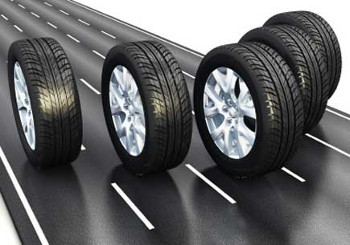 |
| February 25, 2014 | Volume 10 Issue 08 |
Designfax weekly eMagazine
Archives
Partners
Manufacturing Center
Product Spotlight
Modern Applications News
Metalworking Ideas For
Today's Job Shops
Tooling and Production
Strategies for large
metalworking plants
Wheels:
Low-resistance tires really do save drivers money

Drivers who switch to tires with low rolling resistance can save an average of nearly $150 a year, says a University of Michigan researcher.
"One parameter on which tires differ is their rolling resistance -- the force resisting the motion when an object rolls," says Michael Sivak, research professor at the U-M Transportation Research Institute. "Tires with low rolling resistance roll easier and, therefore, get better mileage than tires with high rolling resistance."
The U.S. Transportation Research Board estimates that a 10 percent increase in tire rolling resistance will result in about a 1.5 percent decrease in vehicle fuel economy.
Sivak's study is the first comprehensive evaluation of how much fuel a driver can save when using tires with low rolling resistance.
Sivak examined the rolling-resistance measurements for 63 new same-sized tire models obtained by Consumer Reports at the same load and inflation pressure to calculate the fuel consumed annually by an average driver. He then calculated differences in fuel used (and money spent) between tires at the extremes of rolling resistance.
The tires represented a cross-section of the currently available T-, H-, and V-speed-rated tires for light-duty vehicles on the U.S. market (maximum speeds for each of these types of speed-rated tires are 118 mph, 130 mph, and 149 mph, respectively).
Rolling resistance (RRf) for the combined set of all tires examined ranged from 6.89 lb to 12.5 lb, with a median of 10.28 lb. For the average vehicle currently on the road, the rolling resistance extremes translate into a maximum fuel economy of 22.4 mpg (RRf at 6.89 lb.) and a minimum of 20.7 mpg (RRf of 12.5 lb), with a median of 21.4 mpg (RRf at 10.28 lb).
"Consequently, the obtained rolling resistance extremes yield a minimum and maximum annual fuel consumption of 505 gallons and 547 gallons, respectively," Sivak says. "At the average 2013 price of regular gasoline, the obtained fuel-consumption results in a $147 difference in the annual cost of gasoline per light-duty vehicle."
For the combined set of all tires, the added fuel consumed with tires at the current maximum rolling resistance represents an 8.3 percent increase compared to the fuel consumed with tires at the current minimum rolling resistance.
Learn more about U-M Sustainability at sustainability.umich.edu.
Source: University of Michigan
Published February 2014
Rate this article
View our terms of use and privacy policy
